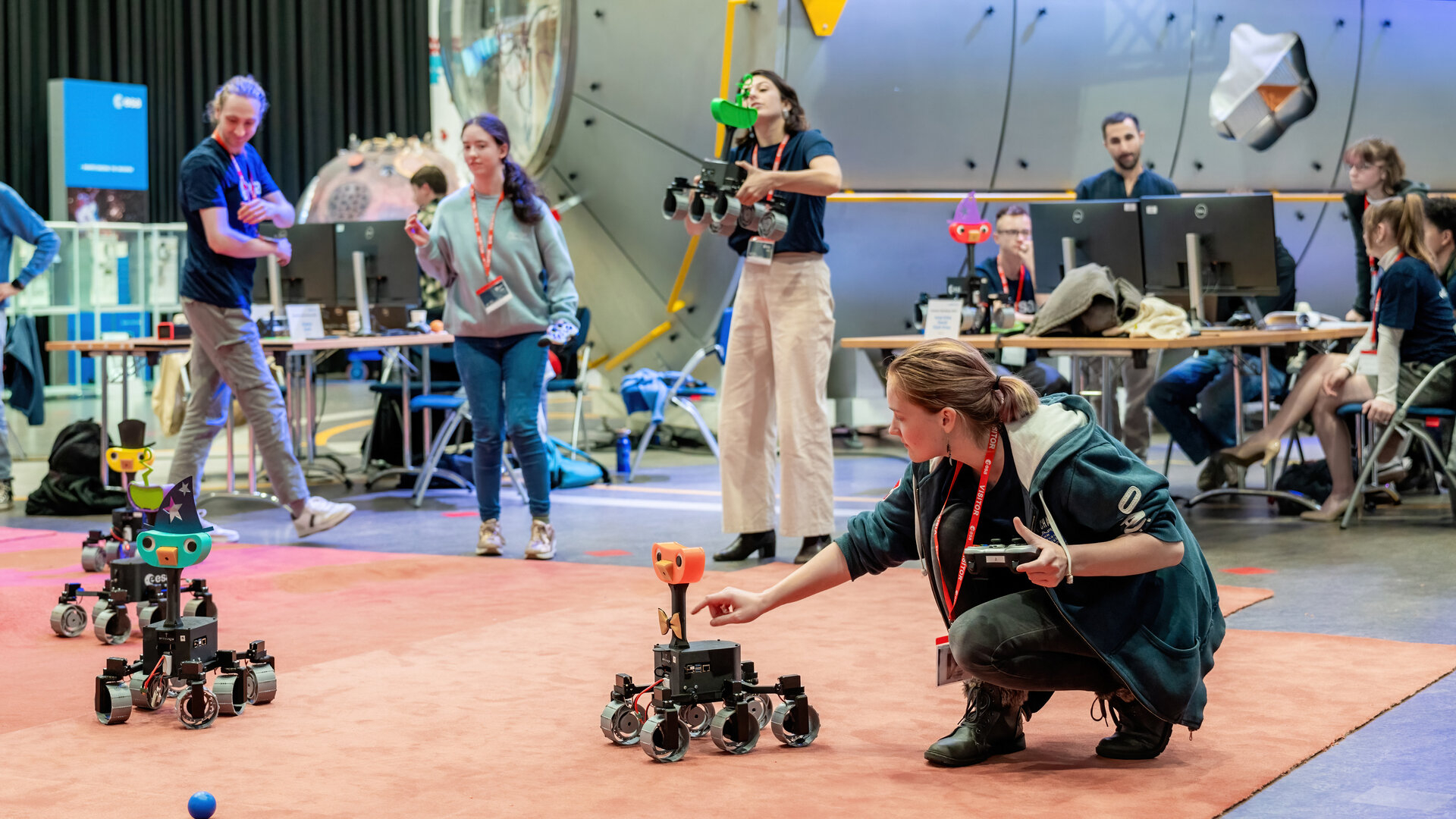
University students tested 3D-printed rovers designed to emulate Europe's Rosalind Franklin ExoMars rover that is slated to launch to the Martian surface by 2028.
Six student teams acted as mission control for the miniature rovers; the activity was part of the European Space Agency's (ESA) Academy Robotics Workshop held at the agency’s Research and Technology Centre (ESTEC) in the Netherlands. The students programmed the robotic explorers, called ExoMy rovers, to autonomously search and navigate toward a target within a simulated Mars environment.
The 3D-printed ExoMy rovers were inspired by the design of ESA's Rosalind Franklin rover and equipped with six wheels, a camera and Raspberry Pi computer. One of the assignments required using the ExoMy camera to take pictures of the target blue ball on the mock Martian surface and label each photo with a specific location so that, with the help of a Machine Learning algorithm, the rover could be trained to recognize the ball on its own, according to a statement from ESA.
"The participants did not need to have previous familiarity with the topics involved; the objective was to familiarize them with the design and operation of a 3D-printed rover, inspired by ESA's Rosalind Franklin ExoMars rover," Marti Vilella Ramisa, a robotics engineer from ESA’s Automation Robotics section, said in the statement.
Related: NASA's mini moon rovers go for a test drive ahead of 2025 private lunar launch (photos)
The Rosalind Franklin rover, part of ESA's ExoMars program, is expected to launch to the Red Planet by the end of 2028 and land on the Martian surface the following year, where it will search for possible signs of past life.
A total of 30 university students with an engineering or robotics background from 14 different ESA Member States and Canada participated in the workshop, which began with a general introduction to robotics and its application to Mars exploration.
"The four-day workshop involved a mixture of lectures and tutorials then hands-on exercises to put their new-found knowledge to the test," Ramisa said in the statement. "This involved adding features and fixing bugs in the rovers’ ROS 2 Robot Operating System, mostly programmed in Python."
Before driving the ExoMy robots in the physical Mars-like environment, the students first tried out operating a rover in a computer application and learned the algorithms used to control different locomotion modes.
"The final exercise involved combining locomotion and image detection capabilities to find and drive towards the ball, allowing for the fact that the ball would be located at an unknown point," Ramisa said in the statement. "This was a challenging task, but all the teams proved successful, and some were over and above their trainers' expectations!"







